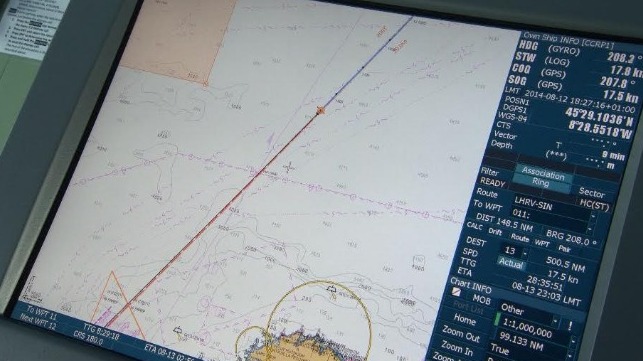
The autonomous container feeder Yara Birkeland is set to begin operations in 2020, and most technologists predict that vessel autonomy will begin rolling out in limited applications within the next five to ten years. As the technical obstacles gradually fall away, the biggest remaining questions may be social: regulatory structures, legal precedents, P&I cover, and - perhaps less discussed - the question of how mariners will interact with autonomous systems.
For the near future, the bridges of autonomous vessels will still be manned, just like the cockpits of today's highly-automated airliners. But this parallel raises important questions. The recent deadly crashes involving the Boeing 737 MAX aircraft appear to have been caused by a fault in an automated anti-stall system, and the pilots had not been trained on how to shut it off if something went wrong. In future years, as deck officers begin to interact with systems that maneuver the vessel automatically, they will have to understand how these systems work, how they make decisions and how to take back control - and not just for one autonomous system design, but for as many designs as there are vendors.
The maritime industry dealt with a similar interface challenge when it began the transition to electronic charts. IMO ensured a minimum level of consistency between ships by issuing a set of standards for functions and appearance, and to qualify as a type-approved ECDIS, each design has to have the same minimum set of features. The basics of how the system appears and how it behaves are (in theory) universal, and these elements are presented to officers in a required training course. It is still a work in progress, but the goal is to minimize confusion when officers switch vessels.
It may be even more important to standardize the means of interacting with an electronic system that is making its own collision-avoidance decisions in real time. No one wants officers to have difficulty figuring out what the vessel's autonomy system is doing or how to control it (like the pilots aboard the 737 MAX). The discussions on interface standards for autonomous systems have not yet begun, but the industry is well aware that this question will have to be addressed. "There is a lot of research into human machine interface [requirements] that is now going on and will have to be applied within our industry," says Riku-Pekka Hagg, Wärtsilä's VP of ship design marine solutions, speaking at a forum organized by autonomy association One Sea.
Officer training standards for autonomy will also have to be developed in future years, Hagg says. The vendors have their own simulation systems and will be able to provide training as a service, but most regulators and schools have not yet begun thinking about what autonomy will mean for their programs. (Some may not yet be familiar with autonomy as a concept, Hagg suggests.)
"If you look at the education of the officers . . . it is not following what is happening technologically," he says. "But as an [industry] and as individual companies, we take into consideration that we will need to be able to provide material and support for education."
The opinions expressed herein are the author's and not necessarily those of The Maritime Executive.
